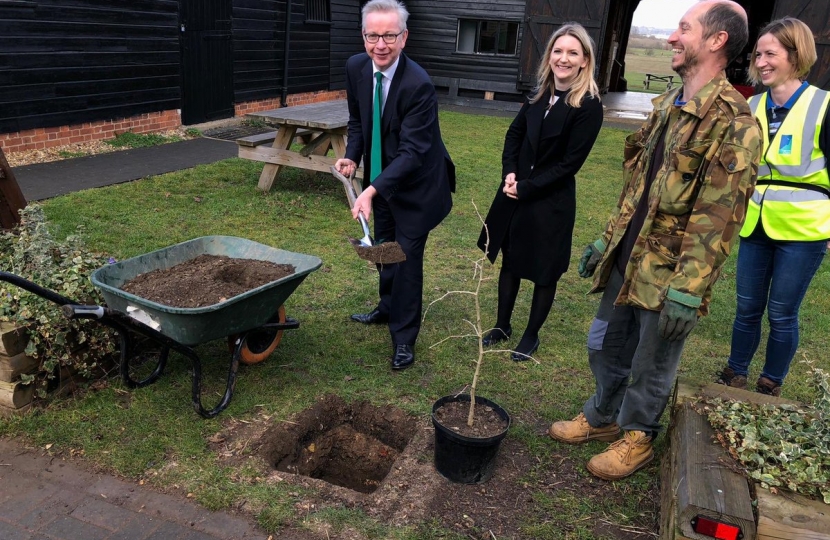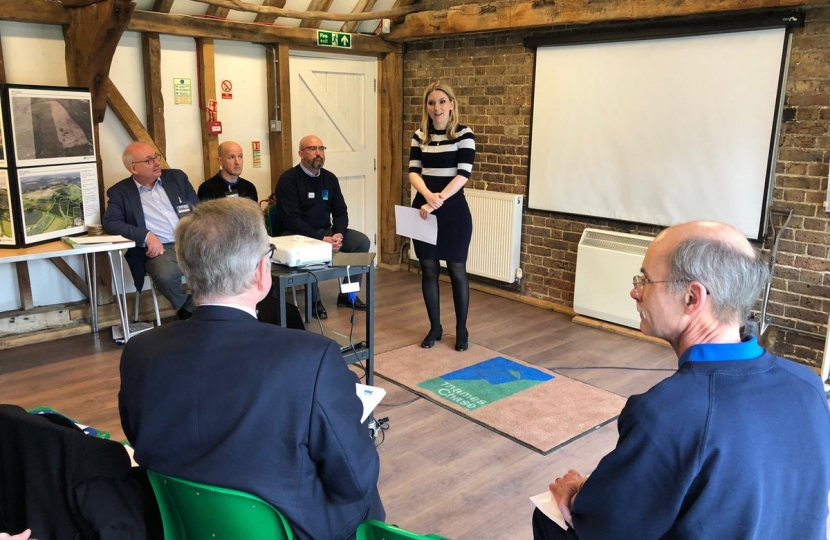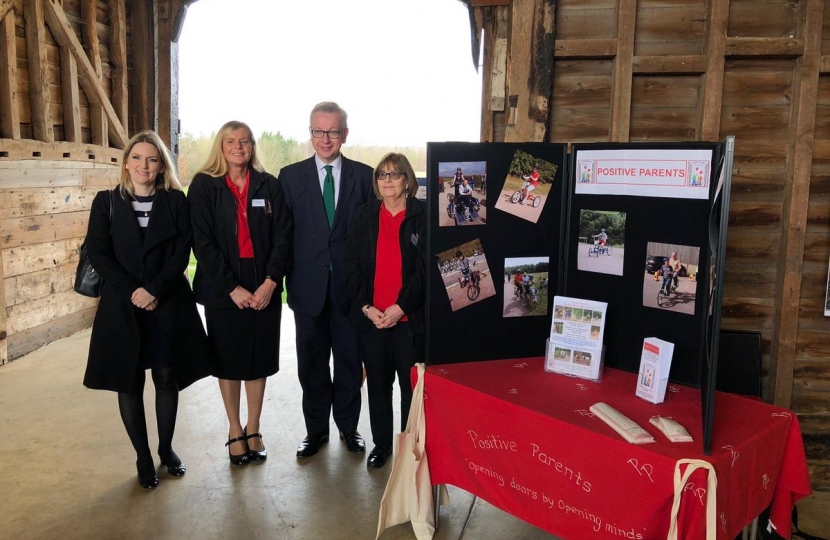My team and I arranged for Environment Secretary, Michael Gove MP to visit Thames Chase Community Forest in Upminster this morning to see first-hand the fantastic work of local volunteers in restoring London’s lost landscapes and making green spaces accessible to all.
The visit showcased the Land of the Fanns project, an ambitious five-year initiative to restore, discover and celebrate the capital’s landscapes as they once were after decades of fragmentation and damage from major road building, settlement growth, quarrying and land fill in and around the M25. The Secretary of State met Mary Wright, Acting Chair of the Forest’s Trust, as well as trustees, volunteers, Positive Parents representatives and Forestry Commission workers to learn about the work of Thames Chase in promoting woodland creation, biodiversity and the restoration of derelict land.
I share the Trust's passion for improving accessibility to the countryside for everyone, and Mr Gove officially opened the Forest’s new Changing Places facility which makes it easier for families with disabled children or relatives to enjoy the outdoors. We also saw the Forest's bicycle hire scheme which includes a range of bikes for people of all abilities, and Mr Gove planted a tree by the Forest Centre to commemorate the visit.
The exciting plans of Thames Chase to restore degraded land and reconnect the countryside to nearby communities could be a blueprint for industrial landscape regeneration across the country. Their efforts show that we can gain countryside as much as we risk losing it and fits with the government’s wider agenda to restore the English countryside to its former glory. Ensuring too that our local forest is a place that everyone can enjoy, including those with disabilities, makes a huge difference to families’ quality of life’.
We raised the issue of the planned Lower Thames Crossing which will cut through Thames Chase land, and we discussed with the Secretary of State a planned new government scheme that better offsets and mitigates the impact to communities of large infrastructure projects. I also asked how we might take a 21st century approach to reducing the visual and environmental impact of the road by improving on the 20th century approach taken to the M25 when it was first built nearby.





